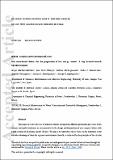Por favor, use este identificador para citar o enlazar a este item:
http://hdl.handle.net/10261/215938COMPARTIR / EXPORTAR:
 SHARE SHARE
 CORE
BASE CORE
BASE
|
|
| Visualizar otros formatos: MARC | Dublin Core | RDF | ORE | MODS | METS | DIDL | DATACITE | |

| Campo DC | Valor | Lengua/Idioma |
|---|---|---|
| dc.contributor.author | Martínez-Martínez, Sergio | - |
| dc.contributor.author | Pérez-Villarejo, L. | - |
| dc.contributor.author | Eliche-Quesada, D. | - |
| dc.contributor.author | Sánchez-Soto, Pedro José | - |
| dc.contributor.author | Christogerou , Angeliki | - |
| dc.contributor.author | Kanellopoulou, D.G. | - |
| dc.contributor.author | Angelopoulos, G.N. | - |
| dc.date.accessioned | 2020-07-03T09:10:42Z | - |
| dc.date.available | 2020-07-03T09:10:42Z | - |
| dc.date.issued | 2019 | - |
| dc.identifier | doi: 10.1111/ijac.13390 | - |
| dc.identifier | issn: 1744-7402 | - |
| dc.identifier.citation | Int. J. Appl. Ceram. Soc, 17(1): 12-21 (2019) | - |
| dc.identifier.uri | http://hdl.handle.net/10261/215938 | - |
| dc.description.abstract | This paper describes the use of industrial wastes arising from different production processes of the ceramic and marble industries as raw materials for the design and formulation of new cement clinkers with a high content of dicalcium silicate (Belite). The aim was to reintroduce these wastes in the industrial sector and take advantage of them for a greater environmental benefit, as indicated by the principles of the circular economy. Formulations containing 2.5, 5 and 10 wt% of chamotte and marble sludge, respectively, and a waste-free formulation have been designed to obtain clinkers with a content of dicalcium silicate higher than 60 wt%. The different blends have been studied up to a maximum temperature of 1390°C by Thermal Analysis. Other techniques such as XRD, XRF, Modified Bogue Equation, Quality Indexes (LSF, AM, SM) and Optical Microscopy have been used for the study and characterization of industrial wastes, the raw materials and the high belite-type cement dosages. The results indicate that this type of cements can be designed using different types of wastes and in this way reduce the environmental impacts caused by the extraction of raw materials and the deposition of the wastes in landfills, improving the circular economy of the construction industry. | - |
| dc.language | eng | - |
| dc.publisher | American Ceramic Society | - |
| dc.relation.isversionof | Postprint | - |
| dc.rights | openAccess | en_EN |
| dc.subject | Industrial wastes | - |
| dc.subject | Chamotte | - |
| dc.subject | Marble sludge | - |
| dc.subject | High belite clinker | - |
| dc.subject | Circular economy | - |
| dc.title | New waste-based clinkers for the preparation of low-energy cements. A step forward toward circular economy | - |
| dc.type | artículo | - |
| dc.identifier.doi | 10.1111/ijac.13390 | - |
| dc.relation.publisherversion | http://dx.doi.org/10.1111/ijac.13390 | - |
| dc.embargo.terms | 2020-09-14 | - |
| dc.date.updated | 2020-07-03T09:10:43Z | - |
| dc.relation.csic | Sí | - |
| dc.type.coar | http://purl.org/coar/resource_type/c_6501 | es_ES |
| item.openairecristype | http://purl.org/coar/resource_type/c_18cf | - |
| item.fulltext | With Fulltext | - |
| item.cerifentitytype | Publications | - |
| item.openairetype | artículo | - |
| item.grantfulltext | open | - |
| Aparece en las colecciones: | (ICMS) Artículos | |
Ficheros en este ítem:
| Fichero | Descripción | Tamaño | Formato | |
|---|---|---|---|---|
| ACCEPTED MS 16579388.pdf | 1,12 MB | Adobe PDF |  Visualizar/Abrir |
CORE Recommender
SCOPUSTM
Citations
10
checked on 10-abr-2024
WEB OF SCIENCETM
Citations
9
checked on 14-feb-2024
Page view(s)
115
checked on 18-abr-2024
Download(s)
231
checked on 18-abr-2024
Google ScholarTM
Check
Altmetric
Altmetric
NOTA: Los ítems de Digital.CSIC están protegidos por copyright, con todos los derechos reservados, a menos que se indique lo contrario.
